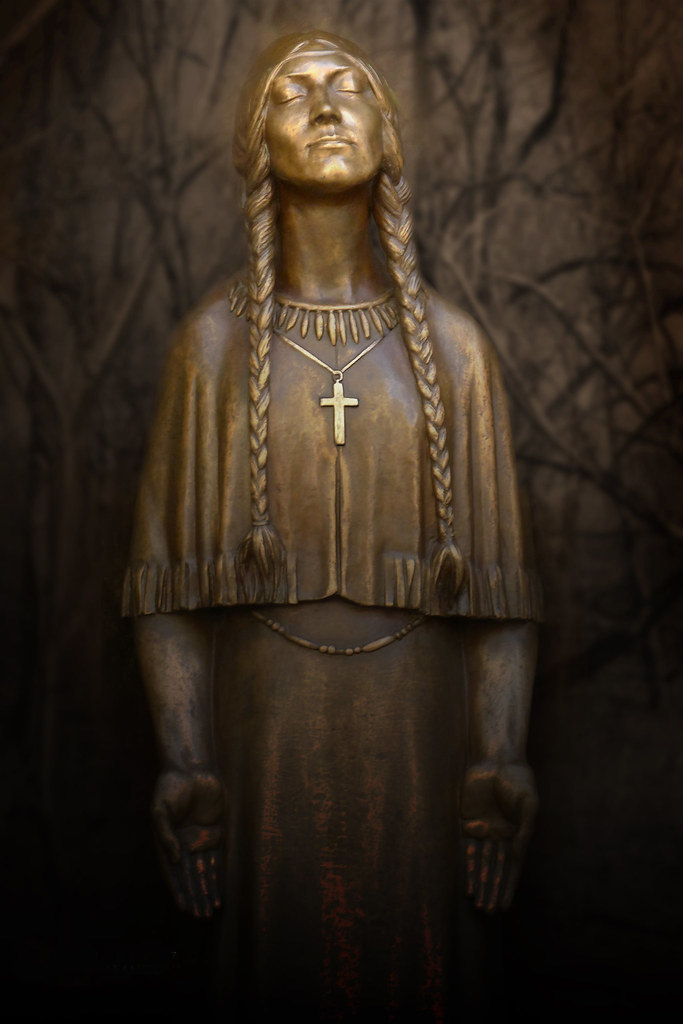“Who can tell me what is most pleasing to God that I may do it?”
Kateri Tekakwitha was born in 1656 in the Mohawk village of Ossernenon (near Fonda, New York) and is the first Native American to be recognized as a saint.
At the age of 4, she contracted smallpox from an outbreak of which her entire family died including her baby brother, mother and the Chief her father. It scarred her skin and was a source of humiliation in her youth. She had poor eyesight and the brightness of the sun bothered her. She was raised by her uncle who then became Chief.
She was a skilled worker, diligent and patient but she refused to marry. She was punished by having been given more work but she was relentless.
When priests ventured to her village, she was drawn by their teachings and converted to Catholicism at the age of 19. She often went to the woods to speak to God and listen to him in her heart. She vowed a life of chastity, pledging to marry only Jesus and refused to work on Sundays of which she was denied meals on that day. Her decision was very unpopular and they started rumors of sorcery. Children would taunt her and throw stones and some of the people threatened her with torture or even death if she did not renounce her religion. To avoid persecution, she traveled 200 miles for 2 months through woods and rivers to a Catholic Mission south of Montreal.
Being very devout, she put thorns on her sleeping mat, fasted frequently and often prayed for the conversion of her fellow Mohawks. She spoke words of kindness to everyone she encountered and aided the poor and sick at the mission. Those around her referred to her as the ‘Holy Woman’. She was sickly and just five years after her conversion, at the young age of 24, died of a severe illness.
Kateri is the Mohawk form of Catherine of which she took from Saint Catherine of Siena. Her Haudenosaunee name, “Tekakwitha,” can be translated as “One who walks by feeling her way”. She often covered her head with a blanket because of her skin condition and partial blindness, feeling her way around as she walked.
In Kateri’s time, and for thousands of years before then, the Haudenosaunee people carefully managed the natural world for food, shelter and clothing. With the use of controlled fire, they managed the land for the benefit of people and nature, keenly aware of the rhythms of nature inscribed by our Creator.
She is the patron saint of the environment, ecology, and Indigenous Americans.
Her feast day is July 14.
For God’s Glory.
